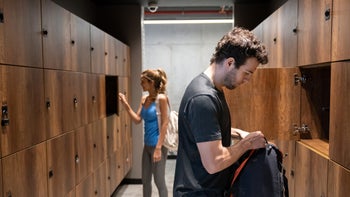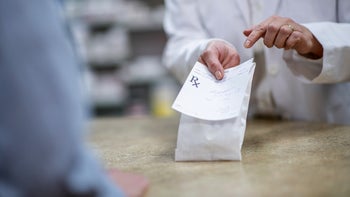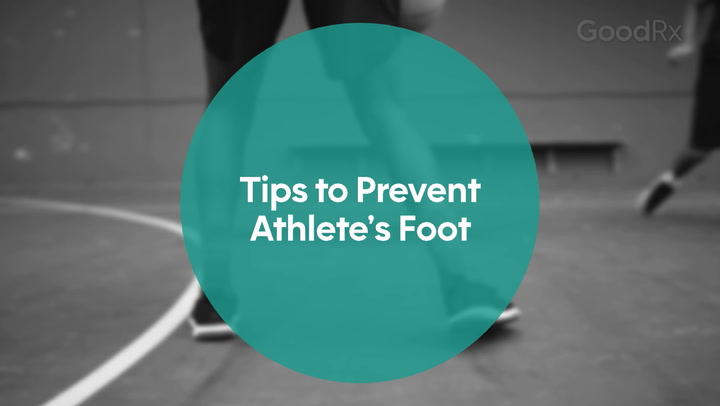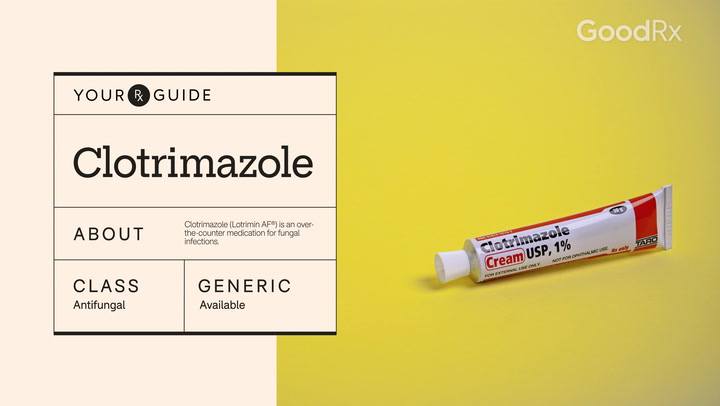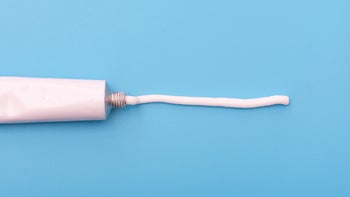
3 Athlete’s Foot Treatments You Have to Try for Long-Lasting Relief
Key takeaways:
Athlete’s foot (tinea pedis) is an itchy foot rash caused by a fungus.
Over-the-counter (OTC) creams and powders like terbinafine (Lamisil) and tolnaftate (Tinactin) can get rid of the infection. Home remedies like tea tree oil, hydrogen peroxide, and baking soda can help too.
To cure more stubborn infections, some people need prescription medications like terbinafine and itraconazole.
Access savings on related medications
Table of contents

Athlete’s foot, or tinea pedis, is a fungal infection. It causes an itchy, burning rash on the feet and between the toes. Despite its name, it doesn’t matter if you’re a seasoned athlete or a weekend warrior at the gym. Anyone can get athlete’s foot.
Athlete’s foot can be tricky to get rid of. But with the right treatment, you can beat it. Here are the best athlete’s foot treatments that really work.
What is athlete’s foot?
Athlete’s foot is a type of ringworm. Ringworm is a general term for a skin infection caused by a fungus. Other types of ringworm include:
Jock itch (tinea cruris)
Scalp ringworm (tinea capitis)
Nail fungus (onychomycosis)
The fungus responsible for athlete’s foot likes to grow in damp spaces, like gym floors, showers, or swimming pools. You can pick up ringworm when you walk barefoot in an area that’s contaminated with the fungus.
The most common symptom is itchy skin between the toes, especially between the fourth and fifth toes (your pinky toe and the one next to it). But athlete’s foot can also wrap around the soles of your feet.
You may also notice a burning sensation and these other skin changes:
Cracking and peeling
Redness
White patches between the toes
Blisters
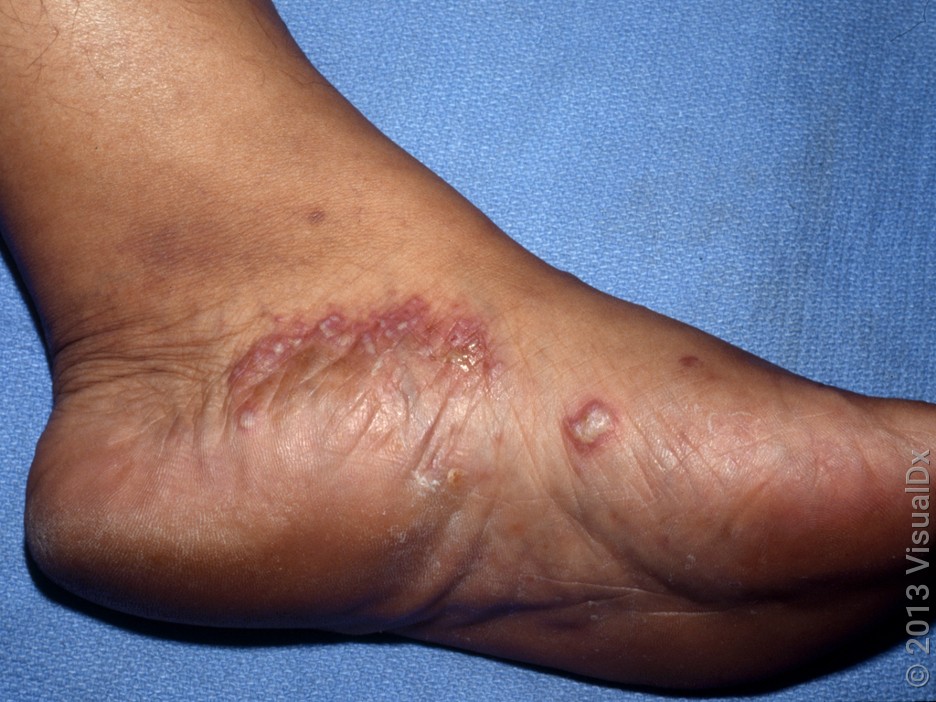

What are the best athlete’s foot treatments?
Athlete’s foot doesn’t usually go away on its own. You need to get treatment to cure the infection. And treating your fungal rash is important because it’ll also lower your risk of developing bacterial infections that can happen when athlete’s foot is left untreated.
Starting treatment early also stops you from being contagious so you don’t spread athlete’s foot to other parts of your body or to other people.
Most of the treatment options for athlete’s foot involve over-the-counter (OTC) medications or home remedies. There are prescription options too.
Antifungal creams: Topical medications like creams can treat many types of fungal skin infections. Learn about these top over-the-counter antifungals.
How long is ringworm contagious? Ringworm is a common skin infection that can easily spread. Here’s how long ringworm remains contagious.
What causes smelly feet? Sweaty feet can create a ripe environment for odor-causing bacteria to thrive. Here are tips to keep your feet funk-free.
1. Over-the-counter creams, lotions, sprays, and powders
Since athlete’s foot is a fungus, you need to treat it with an antifungal medication. Antifungals are like antibiotics, except they kill fungus instead of bacteria.
There are several antifungals available OTC. These medications come in topical creams, lotions, and ointments. They’re also available in foams, sprays, and powders.
OTC treatments for athlete’s foot include:
Terbinafine (Lamisil)
Clotrimazole (Lotrimin Ultra)
Tolnaftate (Tinactin)
Butenafine (Lotrimin Ultra)
Some brand names contain more than one of these fungal-fighting medications.
Research suggests that terbinafine (Lamisil) might be the most effective medication to treat athlete’s foot. But the other medications work well too. So, if your local pharmacy doesn’t carry terbinafine, it’s OK to pick whichever option is available.
Another topical treatment is an OTC hydrocortisone cream. It’s a good option if your athlete’s foot is causing “intense itching and irritation,” said Andrew Wong, MD, medical director of Hartford HealthCare Medical Group Fairfield Region in Connecticut.
The cream can accelerate the healing process, Dr. Wong said. For best results, apply it twice a day in addition to your other treatments.
2. Home remedies
Home remedies won’t cure athlete’s foot. But they can reduce symptoms and keep you comfortable as you wait for your medical treatments to start working. Here are some home remedies you can use in addition to OTC antifungals.
Hydrogen peroxide
Hydrogen peroxide can destroy the fungus causing your infection. As an added bonus, it’ll kill any bacteria growing in the area too. You can buy a bottle at your local pharmacy.
To use hydrogen peroxide for your athlete’s foot, pour some over your feet twice a day before applying your antifungal cream or lotion. Just make sure to dry your feet completely before putting on your OTC antifungal.
Tea tree oil
Tea tree oil has antifungal and antibacterial properties. But don’t use pure tea tree oil on your skin. You need to dilute it with a carrier oil (like coconut oil). Aim for a concentration of 25% to 50% tea tree oil.
Here’s how to apply tea tree oil for athlete’s foot:
Apply a few drops to the areas with athlete’s foot twice a day.
Let the oil sit on your skin for as long as possible.
Don’t apply the oil before or after your antifungal cream or lotion.
Space out the application, using it a few hours before or after your antifungal treatment.
Vicks VapoRub
Vicks VapoRub has eucalyptus oil and menthol, both of which have antifungal properties. Plus, the menthol can have a cooling effect and soothe your burning feet. You can apply Vicks VapoRub to your feet at night after you’ve applied your antifungal cream or lotion.
Baking soda
Baking soda also has antifungal properties. Here’s how to make an antifungal foot soak:
Mix ½ cup of baking soda in a bucket or small basin with warm water.
Soak the affected foot for 20 minutes, twice a day.
Don’t rinse your feet afterward (you want to keep the baking soda on the skin). Make sure to dry your feet completely.
When your feet are dry, apply your antifungal cream or lotion.
Moisture-wicking socks
Fungus loves warm, dark, and moist areas. To keep fungus away, make your feet a less-welcoming home. One way to do this is to wear socks made of materials that wick away moisture and sweat. You can also put a foot powder on your bare feet, like baby powder or medicated Gold Bond powder. This will help keep your feet dry.
Vinegar foot soak
So far, there are no studies looking at vinegar foot soaks for tinea pedis. But studies have shown that vinegar can treat other types of fungus. Using vinegar foot soaks along with other treatments may help your athlete’s foot clear up faster.
To do a vinegar foot soak:
Combine one part vinegar (apple cider vinegar or another type) to two parts warm water.
Then, soak your feet for 15 to 20 minutes.
To finish, dry off your feet and apply your regular medication.
Repeat this daily until your athlete’s foot has cleared.
3. Prescription medications
If your athlete’s foot hasn’t gotten better after 3 weeks or it’s getting worse, it’s time to see a dermatologist or another qualified healthcare professional. You may need prescription treatment options to cure your athlete’s foot. There are prescription-strength topical treatments, like creams and lotions. But your dermatologist might recommend an oral antifungal instead. This can more thoroughly treat the infection, according to Dr. Wong.
“Oral medication is especially useful for infections extending deep under the skin or involving the nails,” Dr. Wong said. “Because this treatment may affect the liver or interact with other medications, your [prescriber] will regularly monitor you while you’re taking oral antifungal therapy.”
Here are the most commonly prescribed oral medications and their usual doses:
Terbinafine (Lamisil) — 250 mg per day for 2 weeks
Itraconazole — 200 mg twice daily for 1 week
Fluconazole (Diflucan) — 150 mg once weekly for 2 to 6 weeks
If your athlete’s foot is severe, you may also need medicated foot baths containing salicylic acid or aluminum acetate.
Dr. Wong added that “soaking your feet in a Burow’s solution (aluminum acetate) twice a day can speed up healing.”
How do you kill athlete’s foot?
To give treatments the best chance at curing your infection for good, follow these steps:
Dry your feet first. For topical medications, make sure your feet are fully dry before applying the medication. Remember to dry between your toes.
Follow the instructions. Whether you’re using creams or pills, it’s important to use the medication as directed. Some topical treatments should be applied once or twice per day. Others may need to be applied more frequently.
Don’t stop once your feet seem better. Keep applying the medication for a month, even if your skin looks better and your symptoms are gone. This will make sure all the fungus is gone. Even a few lingering fungi can make your athlete’s foot flare back up.
Practice prevention. Keep athlete’s foot from coming back by using shower shoes around pools and locker rooms, avoiding sharing towels or shoes, and keeping your feet clean and dry.
Frequently asked questions
Athlete’s foot can be mistaken for other conditions that affect the skin, like eczema, psoriasis, and contact dermatitis on the feet. If you aren’t sure what’s causing a rash on your feet, it’s best to visit a healthcare professional or dermatologist so they can confirm the diagnosis and recommend the best treatment for you.
Athlete’s foot may not go away on its own if you don’t treat it. Untreated athlete’s foot can lead to even more bothersome symptoms and spread to your toenails or even other parts of your body. And because fungal infections break down your skin barrier, untreated athlete’s foot can also lead to bacterial infections on your feet.
Athlete’s foot is contagious as long as the infection is active on your foot. It stops being contagious after 48 hours of antifungal treatment. Like other types of ringworm, it spreads by coming into contact with something or someone that has the fungus.
The bottom line
Athlete’s foot (tinea pedis) is a fungal infection that develops on the feet and in between the toes. Typical symptoms include itchy, cracked skin between the toes or sides of the feet that can start to turn red or peel. You can treat athlete’s foot at home with OTC antifungal creams, lotions, and powders. Home remedies like tea tree oil and hydrogen peroxide can ease symptoms, but they won’t cure athlete’s foot on their own.
If your infection hasn’t gone away after 3 to 4 weeks, it’s time to see a healthcare professional. You may need prescription-strength treatment to cure your athlete’s foot.
Why trust our experts?



Images used with permission from VisualDx (www.visualdx.com)
References
Centers for Disease Control and Prevention. (2024). Healthy habits: Foot hygiene.
Centers for Disease Control and Prevention. (2024). Symptoms of ringworm and fungal nail infections.
Crawford, F., et al. (2007). Topical treatments for fungal infections of the skin and nails of the foot. Cochrane Database of Systematic Reviews.
DermNet. (2018). Tinea pedis.
InformedHealth.org. (2022). Athlete’s foot: Learn more – what helps to get rid of athlete’s foot? Institute for Quality and Efficiency in Health Care.
InformedHealth.org. (2022). Overview: Athlete's foot. Institute for Quality and Efficiency in Health Care.
Kelly, S., et al. (2023). Vinegar sock soak for tinea pedis or onychomycosis. Journal of the American Academy of Dermatology.
Letscher-Bru, V., et al. (2012). Antifungal activity of sodium bicarbonate against fungal agents causing superficial infections. Mycopathologia.
Leyden, J. J. (1975). Aluminum chloride in the treatment of symptomatic athlete’s foot. JAMA Dermatology.
Martin-Lopez, J. E. (2015). Athlete’s foot: Oral antifungals. BMJ Clinical Evidence.
Niamat, H., et al. (2020). Efficacy of different vinegars as antifungal agents against Cryptococuss neoformans and Sarocladium kiliense. Pure and Applied Biology.
Zubko, E. I., et al. (2013). Co-operative inhibitory effects of hydrogen peroxide and iodine against bacterial and yeast species. BMC Research Notes.


